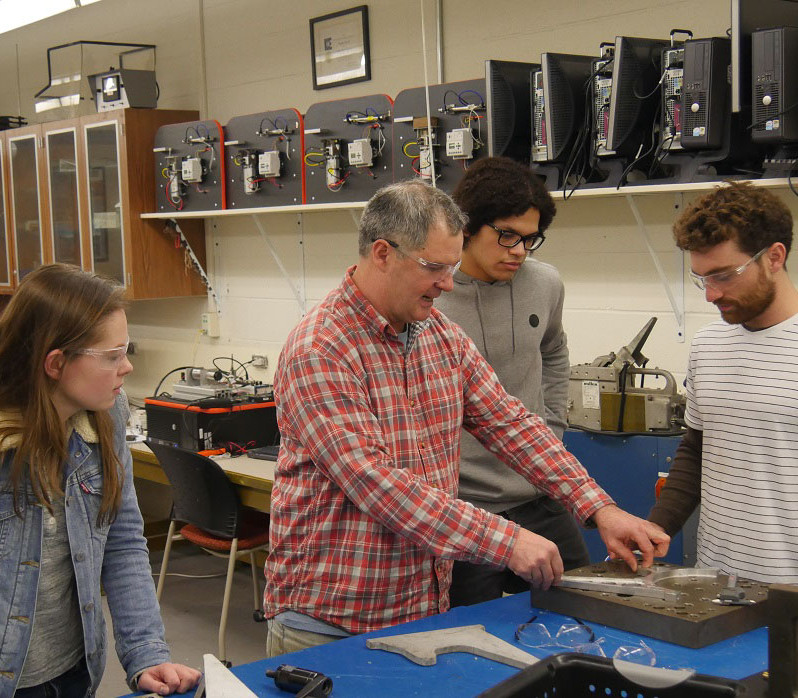
IMPORTANT NOTE
Welcome! We are in the process of revising our website, and certain content may not be up to date. Please contact iLabs.Shop@oregonstate.edu with questions.
Mission
The hands-on knowledge imparted in the iLabs enhances student success with both academic coursework and extracurricular projects. And it gives our graduates a clear advantage in entering the workplace as well-rounded, technically savvy engineers. In addition, iLabs staff support the work of MIME faculty and others across campus by designing and fabricating parts and components needed for teaching and research.
Register for Qualification Training
iLabs is available to any student who is a member of the College of Engineering (COE). To gain access to iLabs spaces, students must complete a series of qualifications to ensure proper training.
Completion of Orientation and Shop Basics is required for ALL subsequent qualifications.
To register for the new, entirely online Shop Basics please contact iLabs.Shop@oregonstate.edu to be added to the Canvas page.
Training Schedule
There are a variety of research projects in progress year-round in COE. The iLabs provides a place for students to explore the many aspects of research, including design, machining, and final assembly. With our skilled staff, outstanding training courses, and excellent equipment, we are able to produce parts that meet or exceed the high level of precision demanded by research.


From pre-engineering to graduate level, COE students utilize iLabs facilities and expertise for completing course assignments, capstone design projects, research activities, and more. Such efforts may involve a variety of manufacturing techniques including welding, machining, CNC machining, rapid prototyping, and sheet metal work.